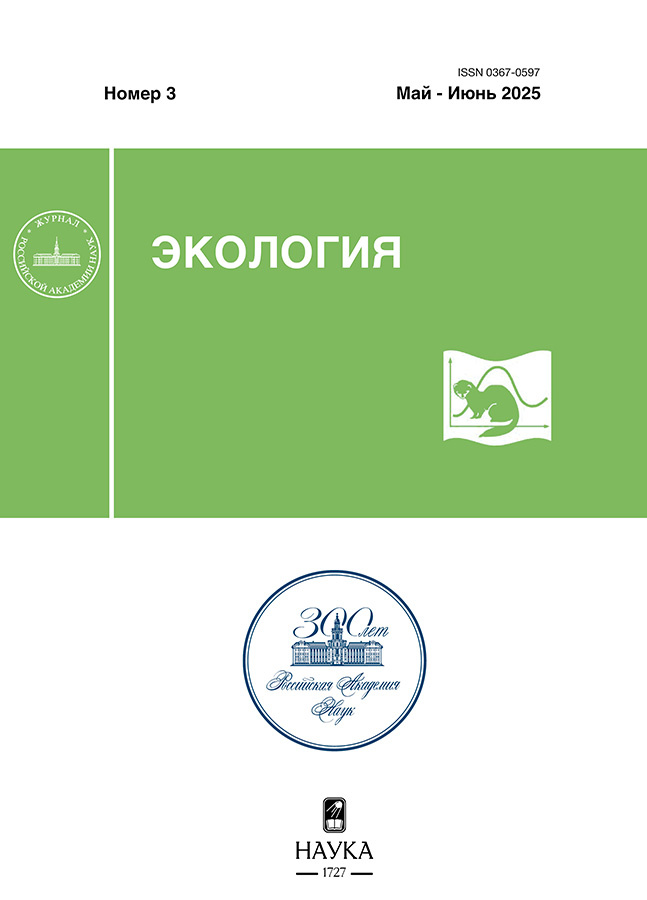Measurement of methane and carbon dioxide fluxes from soils and plants under the mixed forest canopy in the south of Western Siberia
- Авторлар: Ivanov L.A.1,2, Ivanova L.A.1,2, Ronzhina D.A.2, Migalina S.V.2, Yudina P.K.2, Kuzmin I.V.1, Khapugin A.A.1
-
Мекемелер:
- Tyumen State University
- Botanical Garden of the Ural Branch of the Russian Academy of Sciences
- Шығарылым: № 3 (2025)
- Беттер: 245-250
- Бөлім: Short communications
- URL: https://rjdentistry.com/0367-0597/article/view/687353
- DOI: https://doi.org/10.31857/S0367059725030083
- EDN: https://elibrary.ru/tbbtvm
- ID: 687353
Дәйексөз келтіру
Негізгі сөздер
Толық мәтін
Авторлар туралы
L. Ivanov
Tyumen State University; Botanical Garden of the Ural Branch of the Russian Academy of Sciences
Хат алмасуға жауапты Автор.
Email: leonidiv72@mail.ru
Ресей, 625003 Tyumen; 620130 Yekaterinburg
L. Ivanova
Tyumen State University; Botanical Garden of the Ural Branch of the Russian Academy of Sciences
Email: leonidiv72@mail.ru
Ресей, 625003 Tyumen; 620130 Yekaterinburg
D. Ronzhina
Botanical Garden of the Ural Branch of the Russian Academy of Sciences
Email: leonidiv72@mail.ru
Ресей, 620130 Yekaterinburg
S. Migalina
Botanical Garden of the Ural Branch of the Russian Academy of Sciences
Email: leonidiv72@mail.ru
Ресей, 620130 Yekaterinburg
P. Yudina
Botanical Garden of the Ural Branch of the Russian Academy of Sciences
Email: leonidiv72@mail.ru
Ресей, 620130 Yekaterinburg
I. Kuzmin
Tyumen State University
Email: leonidiv72@mail.ru
Ресей, 625003 Tyumen
A. Khapugin
Tyumen State University
Email: leonidiv72@mail.ru
Ресей, 625003 Tyumen
Әдебиет тізімі
- Dalal R.C., Allen D.E. Greenhouse gas fluxes from natural ecosystems // Aust. J. Bot. 2008. V. 56. № 5. P. 369–407.
- Blais A.-M., Lorrain S., Tremblay A. Greenhouse gas fluxes (CO₂, CH4 and N2O) in forests and wetlands of boreal, temperate and tropical regions // Greenhouse Gas Emissions – Fluxes and Processes / Eds. Tremblay A., Varfalvy L., Roehm S. and Garneau M. Berlin/Heidelberg: Springer-Verlag, 2005. P. 87–127.
- Barba J., Brewer P.E., Pangala S.R., Machacova K. Methane emissions from tree stems – current knowledge and challenges: an introduction to a Virtual Issue // New Phytol. 2024. V. 241. № 4. P. 1377–1380.
- Keppler F., Hamilton J.T.G., Braß M., Röckmann T. Methane emissions from terrestrial plants under aerobic conditions // Nature. 2006. V. 439. № 7073. P. 187–191.
- Carmichael M.J., Bernhardt E.S., Bräuer S.L., Smith W.K. The role of vegetation in methane flux to the atmosphere: Should vegetation be included as a distinct category in the global methane budget? // Biogeochemistry. 2014. V. 119. P. 1–24.
- Nisbet R.E.R., Fisher R., Nimmo R.H. et al. Emission of methane from plants // Proc. R. Soc. B Biol. Sci. 2009. V. 276. № 1660. P. 1347–1354.
- Zeikus J.G., Ward J.C. Methane formation in living trees: a microbial origin // Science. 1974. V. 184. № 4142. P. 1181–1183.
- Мухин В.А., Воронин П.Ю. Выделение метана из древесины живых деревьев // Физ. раст. 2011. Т. 58. № 2. С. 283–289.
- Covey K.R., Megonigal J.P. Methane production and emissions in trees and forests // New Phytol. 2019. V. 222. № 1. P. 35–51.
- Jeffrey L.C., Maher D.T., Tait D.R., Johnston S.G. A small nimble in situ fine-scale flux method for measuring tree stem greenhouse gas emissions and processes (S.N.I.F.F) // Ecosystems. 2020. V. 23. № 8. P. 1676–1689.
- Fest B., Hinko-Najera N., von Fischer J.C. et al. Soil methane uptake increases under continuous throughfall reduction in a temperate evergreen, broadleaved eucalypt forest // Ecosystems. 2017. V. 20. № 2. P. 368–379.
- Feng H., Guo J., Peng C. et al. Global estimates of forest soil methane flux identify a temperate and tropical forest methane sink // Geoderma. 2023. V. 429. Art. 116239.
- Machacova K., Bäck J., Vanhatalo A. et al. Pinus sylvestris as a missing source of nitrous oxide and methane in boreal forest // Sci. Rep. 2016. V. 6. Art. 23410.
- Сабреков А.Ф., Глаголев М.В., Фастовец И.А. и др. Связь потребления метана с дыханием почв и травяно-мохового яруса в лесных экосистемах южной тайги Западной Сибири // Почвоведение. 2015. Т. 2015. № 8. C. 963–973.
- Pitz S.L., Megonigal J.P., Chang C.H., Szlavecz K. Methane fluxes from tree stems and soils along a habitat gradient // Biogeochemistry. 2018. V. 137. № 3. P. 307–320.
- Ivanova L.A., Zolotareva N. V., Ronzhina D.A. et al. Leaf functional traits of abundant species predict productivity in three temperate herbaceous communities along an environmental gradient // Flora. 2018. V. 239. P. 11–19.
- Семенов В.М., Кравченко И.К., Кузнецова Т.В. и др. Сезонная динамика окисления атмосферного метана в серых лесных почвах // Микробиология. 2004. Т. 73. № 3. C. 423–429.
- Wang Y., Chen H., Zhu Q. et al. Soil methane uptake by grasslands and forests in China // Soil Biol. Biochem. 2014. V. 74. P. 70–81.
- Peichl M., Arain M.A., Ullah S., Moore T.R. Carbon dioxide, methane, and nitrous oxide exchanges in an age-sequence of temperate pine forests // Glob. Chang. Biol. 2010. V. 16. № 8. P. 2198–2212.
- Bowden R.D., Newkirk K.M., Rullo G.M. Carbon dioxide and methane fluxes by a forest soil under laboratory-controlled moisture and temperature conditions // Soil Biol. Biochem. 1998. V. 30. № 12. P. 1591–1597.
- Wang Z.P., Han X.G., Wang G.G. et al. Aerobic methane emission from plants in the Inner Mongolia steppe // Environ. Sci. Technol. 2008. V. 42. № 1. P. 62–68.
- Guo X., Du Y., Li J. et al. Aerobic methane emission from plant: Comparative study of different communities and plant species of alpine meadow // Polish J. Ecol. 2015. V. 63. P. 223–232.
- Villa J.A., Ju Y., Stephen T. et al. Plant-mediated methane transport in emergent and floating-leaved species of a temperate freshwater mineral-soil wetland // Limnol. Oceanogr. 2020. V. 65. № 7. P. 1635–1650.
Қосымша файлдар











